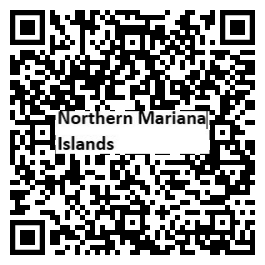Introduction
Background
Under US administration as part of the UN Trust Territory of the Pacific, the people of the Northern Mariana Islands decided in the 1970s not to seek independence but instead to forge closer links with the US. A covenant to establish a commonwealth in political union with the US was approved in 1975, and came into force on 24 March 1976. A new constitution went into effect in 1978.
Geography
Area
total: 464 sq km
land: 464 sq km
water: 0 sq km
Climate
tropical marine; moderated by northeast trade winds, little seasonal temperature variation; dry season December to June, rainy season July to October
Natural resources
arable land, fish
People and Society
Population
51,295 (2023 est.)
Ethnic groups
Asian 50% (includes Filipino 35.3%, Chinese 6.8%, Korean 4.2%, and other Asian 3.7%), Native Hawaiian or other Pacific Islander 34.9% (includes Chamorro 23.9%, Carolinian 4.6%, and other Native Hawaiian or Pacific Islander 6.4%), other 2.5%, two or more ethnicities or races 12.7% (2010 est.)
Languages
Philippine languages 32.8%, Chamorro (official) 24.1%, English (official) 17%, other Pacific island languages 10.1% (includes Carolinian (official), Chinese 6.8%, other Asian languages 7.3%, other 1.9% (2010 est.)
Religions
Christian (Roman Catholic majority, although traditional beliefs and taboos may still be found)
Population growth rate
-0.35% (2023 est.)
Government
Government type
a commonwealth in political union with and under the sovereignty of the US; republican form of government with separate executive, legislative, and judicial branches
Capital
name: Saipan
Executive branch
chief of state: President Joseph R. BIDEN Jr. (since 20 January 2021); Vice President Kamala D. HARRIS (since 20 January 2021)
head of government: Governor Arnold PALACIOS (since 9 January 2023); Lieutenant Governor David APATANG (since 9 January 2023)
Legislative branch
description: bicameral Northern Marianas Commonwealth Legislature consists of:
Senate (9 seats; members directly elected in single-seat constituencies by simple majority vote to serve 4-year terms)
House of Representatives (20 seats; members directly elected in single-seat constituencies by simple majority vote to serve 2-year terms)
the Northern Mariana Islands directly elects 1 delegate to the US House of Representatives by simple majority vote to serve a 2-year term
Economy
Economic overview
US Pacific island commonwealth economy; growing Chinese and Korean tourist destination; hit hard by 2018 typhoon; dependent on energy imports; exempt from some US labor and immigration laws; longstanding garment production
Real GDP (purchasing power parity)
$1.242 billion (2016 est.)
$933 million (2015 est.)
$845 million (2014 est.)
Real GDP per capita
$24,500 (2016 est.)
$18,400 (2015 est.)
$16,600 (2014 est.)
Agricultural products
vegetables and melons, fruits and nuts; ornamental plants; livestock, poultry, eggs; fish and aquaculture products
Industries
tourism, banking, construction, fishing, handicrafts, other services
Exports
$914 million (2016 est.)
$520 million (2015 est.)
Exports - partners
South Korea 73%, Peru 5% (2019)
Exports - commodities
scrap iron, refined petroleum, scrap copper, hydraulic engines, integrated circuits, peas, scrap aluminum (2021)
Imports
$893 million (2016 est.)
$638 million (2015 est.)
Imports - partners
Hong Kong 29%, Japan 29%, Singapore 16%, South Korea 9% (2019)
Imports - commodities
refined petroleum, trunks/cases, cars, watches, jewelry (2019)
Page last updated: Wednesday, December 06, 2023
